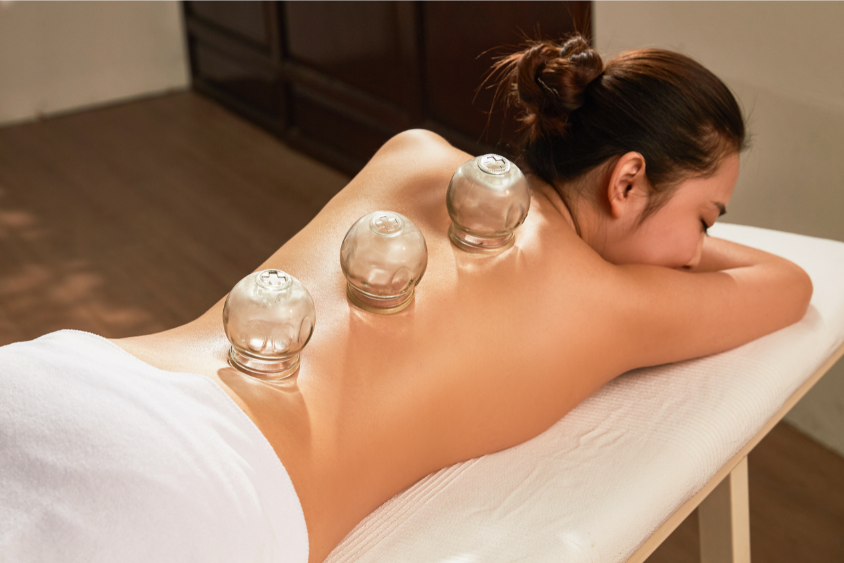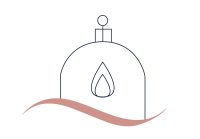What is it and how does it work?
You might have watched a sporting match or event recently, seen an athlete with circular marks on their skin and thought to yourself, what is that? The circular marks that you can see are the result of cupping therapy, which is an ancient form of therapy that has been practiced for thousands of years.
Cupping therapy has become more popular and widely used in recent times, so let’s take a look at its origins, how it works and why athletes and everyday Australians are gravitating towards it as therapy for pain management and injury recovery.
There is an element of discussion that surrounds the origins of cupping therapy and there is no definitive opinion on exactly when and where it originated. It is documented in early Chinese medicine texts and many other references to cupping therapy can be found throughout history in a variety of locations.
Cupping therapy involves placing heated cups (that are usually made of glass) onto the skin to create a suction effect, achieved by heating the air inside of the cup.
When the heated cup is placed on the skin it then cools and a vacuum is formed, creating the suction effect and drawing skins and tissue into the cup. Areas of skin that are covered by the cups take on a dome-like appearance, as the suction from the cups draws skin and tissue into the cup.
Cupping therapy is generally applied to the back, shoulders, abdomen and legs, with cupping therapy on the back being most common.

The philosophy of cupping therapy is that the suction effect on the skin may boost blood flow and circulation, assist immune function, help to remove toxins from the body and help with reducing pain.
In Traditional Chinese Medicine (TCM) philosophy there is an energy called Qi (pronounced Chi) that flows throughout the body along meridian lines. Chinese medicine aims to maximise the flow and Qi and remove any obstructions that may cause the body to fall out of balance and cause pain.
Traditional Chinese medicine practitioners look to bring the body into balance and may use cupping therapy to relieve muscle tension.
Cupping therapy is used by Chinese medicine practitioners when patients are experiencing musculoskeletal pain and chronic pain conditions such as::
Cupping therapy can also be used if a patient is experiencing:
Bloating, stomach pain and indigestion
If a patient is managing stress or anxiety, cupping therapy may provide some relief by promoting relaxation and reducing muscle tension and stiffness.
Cupping therapy may be recommended if a patient is presenting with one of these conditions and if often combined with acupuncture treatment
Yes, cupping therapy research is growing and there are some recent studies that point to some of the potential benefits that cupping therapy may provide.
A 2023 study suggested cupping therapy may be effective for chronic pain and back pain.
A study in 2018 referenced that cupping therapy may “induce comfort and relaxation on a systematic level and the resulting increase in endogenous opioid production in the brain leads to improved pain control.”
It also touched upon the potential for cupping therapy to “remove noxious materials from skin microcirculation and interstitial compartment.” The research concluded that further research is required to verify these theories.

Firstly, it’s important that cupping therapy should be performed by a registered Chinese medicine practitioner. In Australia, Acupuncture & Chinese Medicine practitioners are regulated by AHPRA (Australian Health Practitioner Regulation Agency).
If cupping therapy is performed by an experienced and registered practitioner then the therapy should be painless. When the cups are placed on the body, patients should feel a gentle sensation of suction.
The therapy is often described as a unique and relaxing experience which may be a result of muscle tension being released by the body.
Cups are placed on the body for between 5-30 minutes, depending on the cupping technique that is used. After the therapy your skin may turn red and light circular bruising marks may appear where the cups were placed. These marks appear as the suction has drawn blood to the surface of your skin.
Cupping marks are generally painless and will fade after 1-2 weeks.
Always consult with your GP when determining if cupping therapy is appropriate for you and your health history and current circumstances.

To find out more about Cupping Therapy in Melbourne call us at the clinic on 0403 524 893
